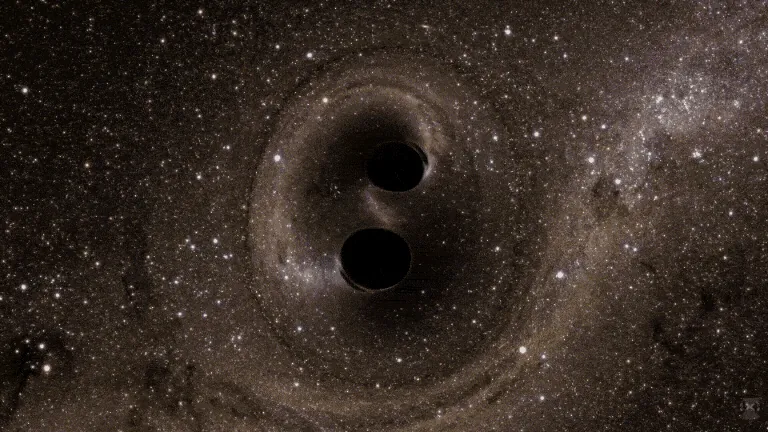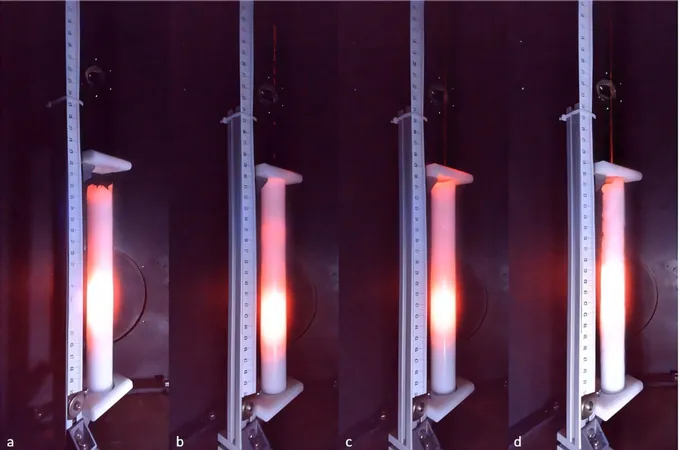
Astronomers Capture the Ultimate 'Natal Kick' of a Rogue Black Hole!
2025-09-15
Author: Benjamin
For the first time ever, scientists have successfully measured the astonishing recoil velocity that resulted from a cataclysmic collision of two black holes. This groundbreaking discovery unveils the incredible phenomenon known as the 'natal kick'—a force that sends newborn black holes hurtling through the cosmos.
The Power of Gravitational Waves
Gravitational waves, the ripples in space-time first theorized by Albert Einstein and confirmed in 2015, continue to deepen our understanding of the universe. In 2019, a significant signal from a black hole merger of varying sizes drew attention; this collision resulted in a newborn black hole that was catapulted away at incredible speeds.
Breaking Records with GW190412
Recently, astronomers decoded the gravitational wave signal known as GW190412, revealing that the combined force of the black hole merger launched the new entity into space at an astonishing velocity of over 31 miles per second (50 kilometers per second). This rapid motion allows the black hole to escape its original cluster of stars, a phenomenon with major implications for cosmic evolution, as outlined in a study published in Nature Astronomy on September 9.
"It’s a remarkable demonstration of what gravitational waves can do,” stated Koustav Chandra, a co-author of the study and astrophysicist at Pennsylvania State University.
How Black Holes Dance
When two black holes spiral towards each other, their intense gravitational forces create waves that ripple through the fabric of space-time. The dynamics of these waves change dramatically depending on the black holes' mass ratio. By analyzing these variations from different observational angles, researchers can determine the direction and speed of the natal kick.
The Fate of the Newborn Black Hole
This powerful recoil can be strong enough to displace the newly formed black hole from its star cluster, which is crucial. Such an escape prevents the black hole from merging with others, which could lead to the formation of a supermassive black hole—some of which may weigh between 100,000 and a staggering 50 billion times the mass of the Sun!
A Journey of Discovery
In 2018, co-author Juan Calderón Bustillo developed a method to calculate these natal kicks from gravitational wave data. Their breakthrough came on April 12, 2019, when the Advanced LIGO detectors in the U.S. and Virgo in Italy captured the GW190412 signal from two stellar-mass black holes—one 29.7 times the mass of the Sun and the other 8.4 times.
Despite being over 2.4 billion light-years from Earth, researchers could pinpoint that the newborn black hole was propelled away at an incredible speed of 111,600 miles per hour (179,600 kilometers per hour)—fast enough to escape its globular cluster!
Reconstructing Cosmic Motion
Chandra highlighted, "This is one of the few phenomena in astrophysics where we're not just detecting something; we’re reconstructing the full 3D motion of an object that's billions of light-years away, using merely ripples in spacetime."
What Lies Ahead?
The team is now set to explore additional black hole mergers, merging measurements from gravitational waves and visible light. This ongoing research aims to unlock further secrets of how these cosmic giants evolve and grow in the vast, mysterious universe.









 Brasil (PT)
Brasil (PT)
 Canada (EN)
Canada (EN)
 Chile (ES)
Chile (ES)
 Česko (CS)
Česko (CS)
 대한민국 (KO)
대한민국 (KO)
 España (ES)
España (ES)
 France (FR)
France (FR)
 Hong Kong (EN)
Hong Kong (EN)
 Italia (IT)
Italia (IT)
 日本 (JA)
日本 (JA)
 Magyarország (HU)
Magyarország (HU)
 Norge (NO)
Norge (NO)
 Polska (PL)
Polska (PL)
 Schweiz (DE)
Schweiz (DE)
 Singapore (EN)
Singapore (EN)
 Sverige (SV)
Sverige (SV)
 Suomi (FI)
Suomi (FI)
 Türkiye (TR)
Türkiye (TR)
 الإمارات العربية المتحدة (AR)
الإمارات العربية المتحدة (AR)